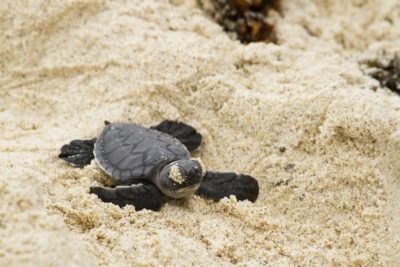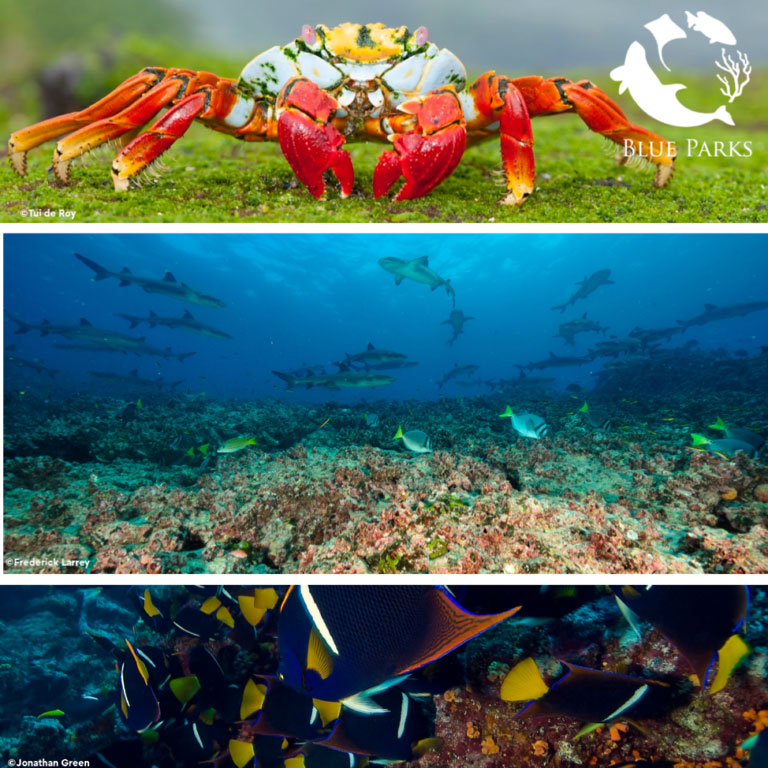Galapagos Marine Reserve Earns Prestigious Blue Park Award
October 24, 2019
 Today, at the Our Ocean Conference in Oslo, Norway, Marine Conservation Institute and its international science council recognized the Galapagos Marine Reserve as an outstanding marine protected area (MPA) with a Blue Park designation.
Today, at the Our Ocean Conference in Oslo, Norway, Marine Conservation Institute and its international science council recognized the Galapagos Marine Reserve as an outstanding marine protected area (MPA) with a Blue Park designation.
Previous and current administrations of the Government of Ecuador, as well as local nonprofits, such as WildAid Marine, have been instrumental in strengthening this and other marine protected areas so that they provide tangible benefits to ecosystems and local communities.
The Galapagos Marine Reserve is globally recognized as an important reservoir of biodiversity and species unique to the area. Spanning 53,618 square miles, the Reserve is home to over 2,900 marine species, more than 25% of which are only found in the Galapagos. One such species is the marine iguana, which is the only reptile in the world adapted to live both on land and in the sea.
 “A Blue Park designation gives much-needed recognition to the Galapagos based on scientific standards and has been well-earned by our partners at the Galapagos National Park,” said WildAid Marine’s Program Director Meaghan Brosnan. “It is a tremendous honor for WildAid to support their ongoing efforts as regional leaders in marine protection and to make the promise of the Galapagos Marine Reserve real.”
“A Blue Park designation gives much-needed recognition to the Galapagos based on scientific standards and has been well-earned by our partners at the Galapagos National Park,” said WildAid Marine’s Program Director Meaghan Brosnan. “It is a tremendous honor for WildAid to support their ongoing efforts as regional leaders in marine protection and to make the promise of the Galapagos Marine Reserve real.”
In part because of its remote location, as well as the unique meeting of cold and warm water currents from north and south, the Galapagos Marine Reserve boasts the highest biomass of reef fish ever recorded. It sustains many IUCN Red Listed species such as great white sharks, blacktip sharks, ocean sunfish, blue whales, albatross, mako sharks, and the Galapagos penguin.
A total of 16 MPAs now hold the prestigious Blue Park Award indicating that they meet the highest science-based standards for marine life protection and management.
“Our goal is to recognize those MPAs like the Galapagos Marine Reserve that deliver real results for marine life conservation and inspire others around the world to strongly protect 30% of the ocean’s most important places by 2030,” said Dr. Lance Morgan, President of Marine Conservation Institute. “We hope that Blue Park recognition of Galapagos Marine Reserve provides a shining example of regional marine conservation efforts and inspires others to follow the same path to protect our oceans for generations to come.”
A growing number of countries and conservation organizations are working towards the creation of hundreds of new protected areas to reach the world’s Sustainable Development Goal of 10% of our oceans by 2020 and the proposed goal of 30%by 2030. Marine Conservation Institute encourages as many MPAs as possible meet the high conservation standards of Blue Parks.
“Many of today’s marine protected areas do not offer effective protection and don’t protect the best places,” said Dr. Sarah Hameed, Blue Parks Director, Marine Conservation. “They’re often ‘paper parks’ appearing to meet national commitments but lacking substance. But the Galapagos Marine Reserve meets science-based standards we know will protect the oceans for generations to come. If we elevate and bring recognition to Blue Parks like the Galapagos Marine Reserve, we believe it will encourage more countries and leaders to satisfy this critical standard going forward.”